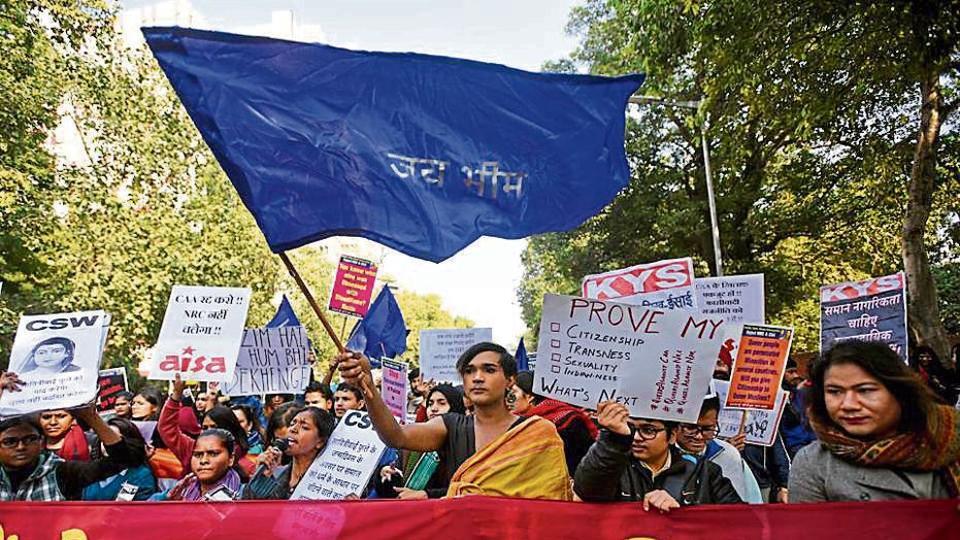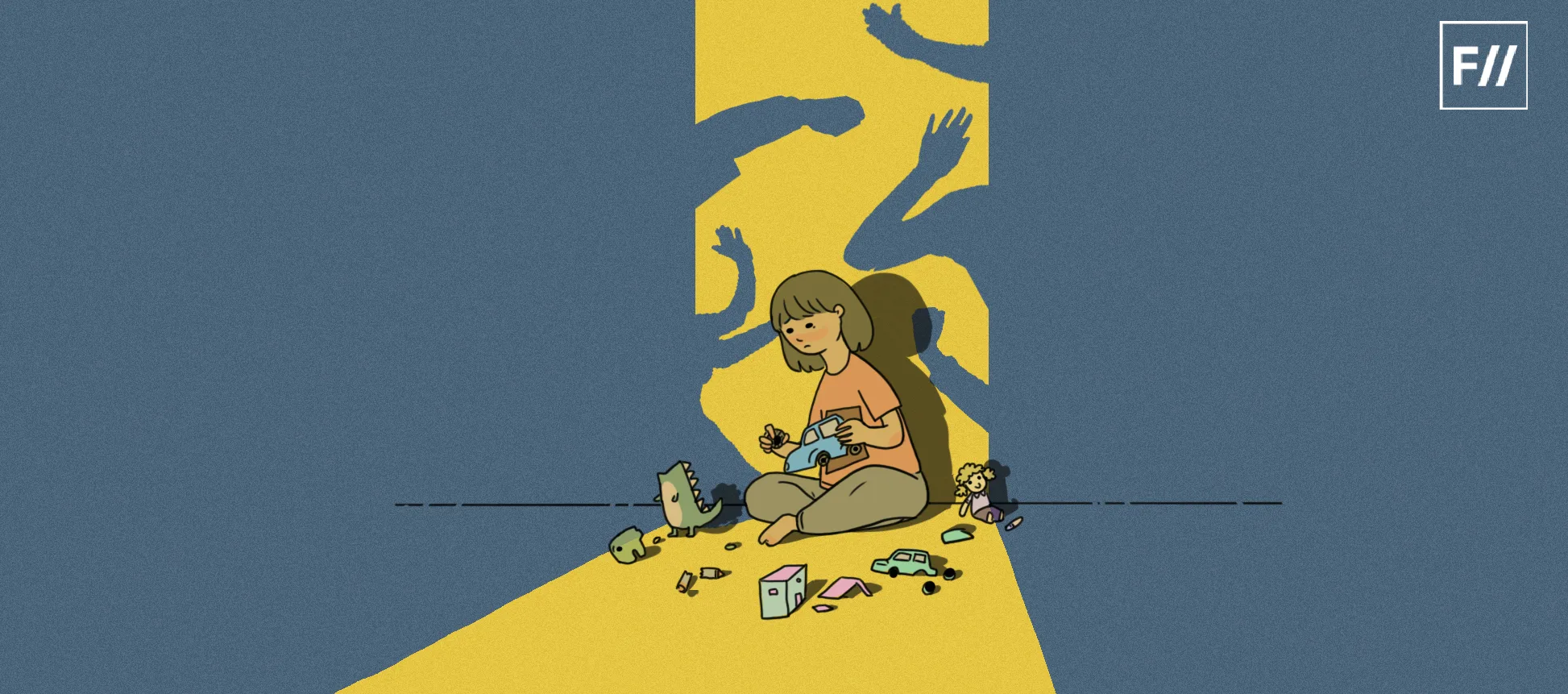For India that embraced secularism in 1975, the recent times are moments of the underlying Islamophobia that have been rearing within the Hindu majority state. To localise the problem in the South Asian context, it’s more than hypocrisy today to simply say that the minority is being persecuted in the neighbouring countries. In this article, I would not like to look at the cultural similarities between these nations that are just one Google search away but draw heavily from my course on Southasian feminism [and not South Asian (cultural, not geographical)], that had equipped me with innovative ways to view the region in times of large scale right wing aggression.
Some politicians would ask you to not make the contemporary socio-political contexts and the CAA protests, a ‘Muslim issue’ where in reality it is a Muslim issue. But, on the contrary, Indian Muslims are now having to prove their nationalism and are being actively hunt down in universities and other protest sites, thereby laying bare the fascist propaganda of the BJP.
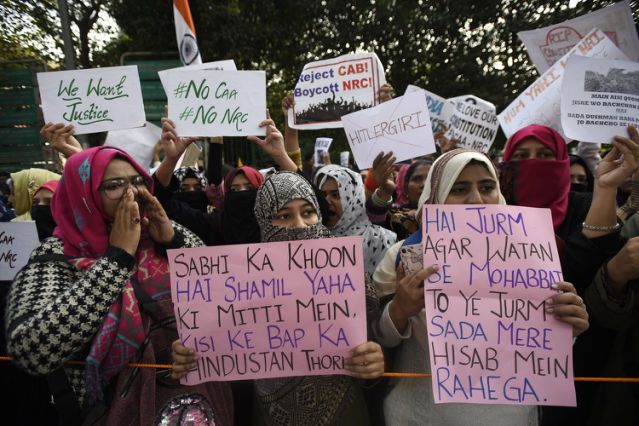
Surely some people need to go an extra mile to prove what for the longest was kept hidden in our collective memories. It was hidden because our country simply wanted to forget how the two nations were born, the brutalities and the violence against women, who held on to the soil despite the large scale displacement and who finally rebuilt their homes separated by barbed wires and armed security. The violence that was unleashed on the bodies of men and women in 1947, has now taken the shape of bureaucratic ordeals imposed upon the Muslims whose identity is time and again contested because what had stayed with India from 1947 is Islamophobia. That’s why the reference ‘Go To Pakistan’ to whoever dissents or dares to dissent.
The violence that was unleashed on the bodies of men and women in 1947, has now taken the shape of bureaucratic ordeals imposed upon the Muslims whose identity is time and again contested because what had stayed with India from 1947 is Islamophobia. That’s why the reference ‘Go To Pakistan’ to whoever dissents or dares to dissent.
The point of writing this piece is not to draw commonalities between the violence that is being unleashed in these countries. The point is to go beyond the masculine state propaganda to promote ‘peace and regional cooperation’, and look into the lived realities of people who have nothing to do whatsoever with the barbed wires and the population registers. Of course, nationality matters and nationalism shouldn’t be demonised but within the large rubric of nationalism lies the multiple ways people relate to their nation and there is no single basis to do so.
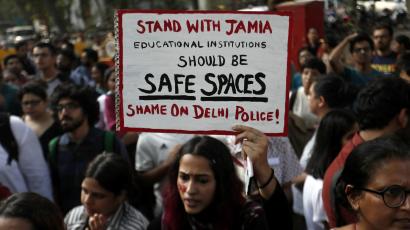
Similarly, the ways one can tell who is Indian/Pakistani/Bangladeshi/Nepalese/Sri Lankan, often overlap. The overlapping is the juncture of Southasian Feminism, as it chalks out the various identities that are forged in the process, cutting across nation states, guarded boundaries, religious xenophobia, and all possible forms of violence that take place. Ideas of cultural similarity often reflect in the ways people live their lives in these regions but the possibility that the sameness is a political statement and a methodological analytic tool that can challenge the monolithic views of the nation states was beyond my imagination.
People Over Nationalism
The geographic obsession with South Asia falls flat on its face when we hear about the partition memoirs, student politics, consumption patterns, art, and so on. People here share the common history of colonialism and decolonisation. People here had been witness to partition and nation building. Monumental political moments that had rocked the landscapes of these nations had only found people finding peace, joy and love through the age old practiced culture ranging from folklores, dance forms, language, cinema and so on. The identity does not have copyrights over the various elements of culture, but flows freely through people.
It is therefore a blatant act to locate emotions between illogical obsession and rational thinking, but emotions make the southasian identity thrive. Emotions in Southasia had been constructed and felt historically across space and time.
The NRC CAA had stripped off the Muslim men and women not only of their long felt association with their space but also their shared imaginations of citizenship and local identities. ‘Hum Kagaz Nahi Dikhanyenge’ isn’t solely words of dissent to state power but also owning their identities as they want to.
Razak Khan while talking about the changing patterns of emotions in Muslims across changing patterns of settlements in the north Indian states, sheds light on how affective turns in understanding spaces can tell us about the political context in which minorities are to confront oppressive situations. He talks about the ‘Muslim ghettos’ that once wore signs of prosperity and civilization in the earlier times but now had been reduced to sights of impoverishment and social exclusion. The veritable imaginations of space across time and that spaces are emotionally constructed by social relations that varies and thrives through reimaginings and collective memory.
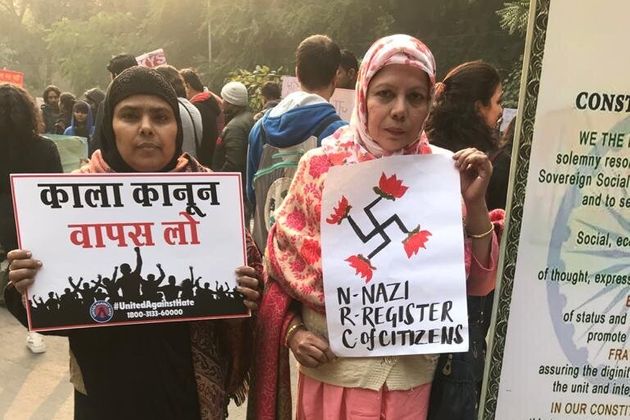
The NRC-CAA had stripped off the Muslim men and women not only of their long felt association with their space but also their shared imaginations of citizenship and local identities. ‘Hum Kagaz Nahi Dikhanyenge’ isn’t solely words of dissent to state power but also owning their identities as they want to. The identity Indian is being reiterated time and again in these protests is precisely because the identity is multipronged and multi layered. It’s the diversity that is being politically reclaimed through occupying the streets of the capital and elsewhere, around the clock diffusing the lines between public and private, which stands monumental for Southasian feminism.
Also read: Women’s Agency In Shaheen Bagh And In Other Protests Against CAA
Southasian Feminism And CAA Protests
The Muslim women had been largely viewed as ‘mothers and sisters’ by the BJP government, in their bid to ‘empower’ them through criminalization of triple talaq. But in the larger reality, they had failed to garner their support because the latter are now at the frontline of protests as they had refused to provide free hand to the forces of Hindutva to reign over their religion and existence.
Talking to number of women at Shaheen Bagh in Delhi and Park circus in Kolkata, women who had been working at home most of their lives had continuously reiterated on the sacrifices their forefathers had to make to free the nation and their informed choices to stay back in India. Does that make them less feminist? Answers to such complex questions aren’t easy and Southasian Feminism has been tackling them since a long time now. However, the feminist lens does help to understand these complexities better. Such questions keep appearing and demand answers that would make us uncomfortable!
Why the daily namaaz in the loudspeaker doesn’t disturb the hindu liberals but chanting Islamic texts do? Why does it outrage the liberals?
These are things to reflect upon and the fact that any act of assertion by the minority disturbs the majority’s ethos, because the latter had normalised violent assertions on the former. The degree and nature of assertion are different because the minority members are often mob lynched on large scale in our nation for not chanting ‘Jai Shree Ram’ whereas majority members had seldom met with such atrocities though atrocities aren’t completely absent.
Talking to number of women at Shaheen Bagh in Delhi and Park circus in Kolkata, women who had been working at home most of their lives had continuously reiterated on the sacrifices their forefathers had to make to free the nation and their informed choices to stay back in India. Does that make them less feminist? Answers to such complex questions aren’t easy and Southasian Feminism has been tackling them since a long time now.
Why is it so that ‘Jai Shree Ram’ had been placed at such a pedestal where people are ready to kill?
The politics of the nation states have a lot to do with it. In Pakistan, the Ahmediya Muslims are not considered Muslim enough to be granted socio-political rights. Till today, they have no voting rights because that would only happen if they claim themselves to be non-Muslims. Their people are still thriving out of nullified state acknowledgement of their existence. In Bangladesh, the bloggers who write on secularism and criticising state sponsored violence on the minorities, had met with deadly outcomes.
In both Pakistan and India, the Dalit women face violence and hardly receive any support by the state in their bid to seek justice. The Hindus do not have any provisions for personal laws in Pakistan and loopholes in the system of separate electorates had often rendered them helpless in the face of state oppression. Ideological battles are being fought in the Southasian terrain that can only be challenged through cultural similarities and collective memory.
Conclusion
The civil society plays a very important role here. Poeple’s organizations has formed vast solidarity networks and has reached out to the distressed populations notwithstanding national divides and backlash from religious fundamentalists. The lived realities of gendered violence in Kashmir reaches the Indian population through alternate media and human rights report that are viewed as divisive by the state funded media and organizations. Films like Mulk bring to the audience the lens of minority existence that so often is wrapped up in the narrative of sympathy and patronization.
Students are protesting in the heart of both Delhi and Lahore due to massive fund cuts on state funded education and privatization policies. These are moments in Southasian feminism that not only extend our solidarity but also help us reimagine ourselves beyond the nation state.
Also read: Anti-CAA Protests: Finding Hope In The Age Of Fascism
The possibility is thinkable not only by imagining our precolonial histories but also celebrate hybrid identities that associate themselves in this never ending process of parallel existence and the subsequent solidarity forged through culture, because our culture is older than our nation states and had soothed in times of violence and helped us resist in times of statist coercion.
References
- Himal Southasian
- The Social Production of Space and Emotions in South Asia by Razak Khan Imaginations and Constructions of South Asia: An Enchanting Abstraction by Aminah Mohammad-Arif
- Searching For Security: The Rising Marginalization of Religious Communities in Pakistan by Ahmad Salim, Shikha Dilawri, Mome Saleem, Ḥumerā Ashfāq
- ‘Speak to the women as the men have all gone’: Women’s Support Networks in Eastern Sri Lanka by Rebecca Walker
Featured Image Source: Hindustan Times
About the author(s)
I am a student of sociology and gender studies. I did my masters in sociology at Delhi School of Economics. However my interest in gender studies had intrigued me to take up this course seriously. Currently I am enrolled for masters at Ambedkar University Delhi. My interest areas lie in researching on the epistemology of protest, nationalism, queerness , the sociology of the family, student politics, work, body and labour. I aspire to write more and bring my insights closer to activism. Intersectional understanding for me had helped me become a better political individual.
